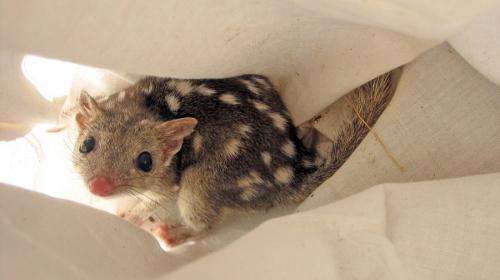Quoll prospects hopeful after island population discovery

The surprise discovery of a quoll population on a Kimberley island has given conservationists hope that populations will persist against the threats of invasive species, such as cane toads.
Department of Parks and Wildlife (DPaW) zoologist Russell Palmer located the population of the endangered northern quoll (Dasyurus hallucatus) on Molema Island, during a baseline survey of the Kimberley islands.
DPaW zoologist Keith Morris, who was not part of the survey, says the inventory was done before the proposed Horizontal Falls National Park is declared.
He says confirming the quolls' presence on offshore islands gives some security that the species will persist, despite pressure from feral cats and toxic cane toads.
He says quolls will be particularly vulnerable to cane toads.
"The males die off each year after mating," he says.
"It removes males, which are quite aggressive, from the population when the young ones are coming out and foraging for themselves."
The females then rear their young during the wet season, when the first cane toads can be expected to arrive.
"Through biosecurity and knowledge of where the islands are you can predict which islands may or may not get cane toads," he says.
As some islands are close to river mouths, he says it is possible to predict where water will flow from river floods and cane toads may raft out or float out on a freshwater plume.
As the island's rugged terrain made access difficult, he says this was a "presence—absence" survey only.
"If quolls are on an island they are using most of the island," he says.
"If they live in rocky habitats they will venture out onto sandy beaches for instance, and then grasslands to forage.
"The group put cameras out wherever they could readily access areas and they left them there for five or six days overnight."
He says they also collected about 100 scats which are now being analysed for remains of other animals.
There are more than 6,000 offshore Kimberley islands.
"Very few of them have been surveyed in any way—we have done systematic surveys of about 30 islands and there was some earlier work in the 1970s and 80s of some other island groups," he says.
"Those surveys didn't use the techniques such as remote cameras that we have these days that have the capacity to detect a wider range of animals.
"To reserve areas such as the Horizontal Falls National Park you want to know that you are reserving the best areas for conservation."
More information: Notes: Mr Morris is a senior principal research scientist with DPaW. On the same trip he led the rat eradication program for nearby Adele Island.
Provided by Science Network WA



















